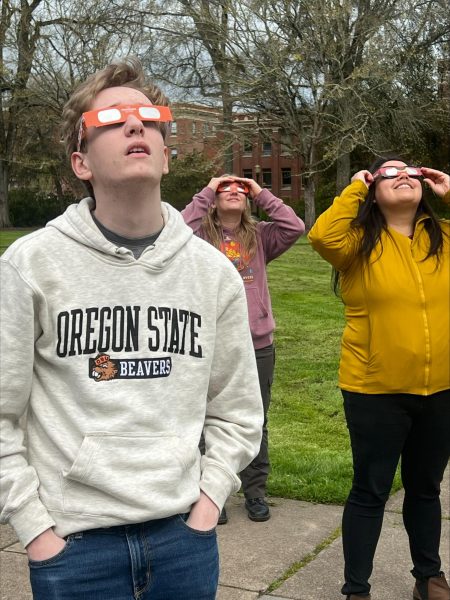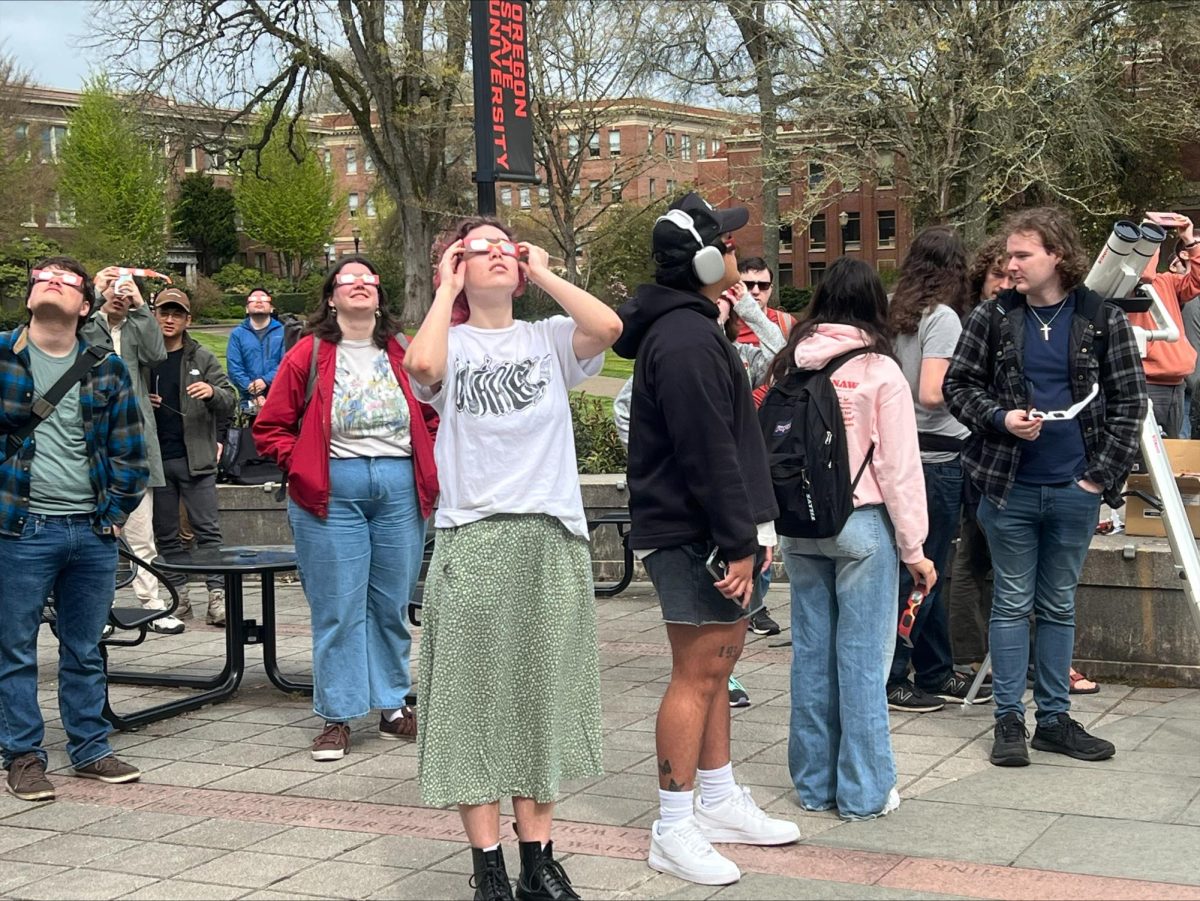
Editor’s Note: This story has been updated from the original version.
During a hazy –yet bright–Monday morning, students across Oregon State University’s campus gazed up at the sky waiting with paper eclipse glasses at the ready.
As the clouds finally thinned, they held up their glasses to view the partial solar eclipse happening just outside of classrooms.
Clustered together in front of the Valley Library during that hour was the OSU Astronomy Club, who handed out over 400 pairs of solar eclipse glasses to passersby, donated by the National Aeronautics and Space Administration.
The partial eclipse, according to Oregon Museum of Science and Industry, occurs when a portion of the sun is obscured by the moon. Today was the last time to view a solar eclipse in the United States for over 20 years, on August 23, 2044, according to NASA.
According to NASA, the path of totality – where the moon is completely in front of the sun – was a rare event with a total eclipse starting from the South Pacific Ocean and slicing its way through North America. The eclipse reached totality in a thin stretch starting in Texas and ending in Maine.

Though not a total eclipse, the prime time to view the partial eclipse in Corvallis was 11:23 a.m., but began at 10:31 a.m., according to Eclipse.org, a website dedicated to detailing eclipse locations.
The last eclipse in Corvallis was in the path of totality, and occurred on August 21, 2017. It Only lasting one minute and 40 seconds, it drew in nearly half a million spectators to Linn and Benton counties, according to a Barometer article in 2017.
“(The solar eclipse) is really amazing. A really cool phenomenon that, if you’re only sticking in one place, only happens every few years,” said Ian Diaz, OSU Astronomy Club treasurer, who stood outside with a telescope.
Phia Morton, OSU Astronomy Club president, said the moon covered about a quarter of the sun at 11:23 a.m.
“At this point it looked somewhat like an artistic interpretation of PacMan in my opinion,” Morton said.
Diaz said it was too cloudy to see the eclipse through a telescope, but Morton said the clouds created an interesting texture as they moved in front of the sun.
Diaz went on to describe how the eclipse happens at different times depending where one is location-wise.
“Eclipses do not occur every month because the moon’s orbit lies at an angle relative to the plane of our solar system. This means that most often during a new moon, the moon is either too high or too low from our perspective to block any part of the sun,” Morton said. “Only when a new moon intersects this plane can a solar eclipse occur because the moon must be directly between the sun and the Earth.”
From there, Morton said the exact position of the moon determines where the eclipse will be visible on Earth.
The next solar eclipse in 2044 will be visible in totality Montana, South Dakota and North Dakota and another will occur on August 12, 2045, according to National Eclipse, a website that maps eclipses.
“It’s really amazing to see, especially if you’ve never seen it,” Diaz said.
Were you there? Send us your solar eclipse photos to [email protected] or message @thedailybaro on Instagram to be featured.















































































































